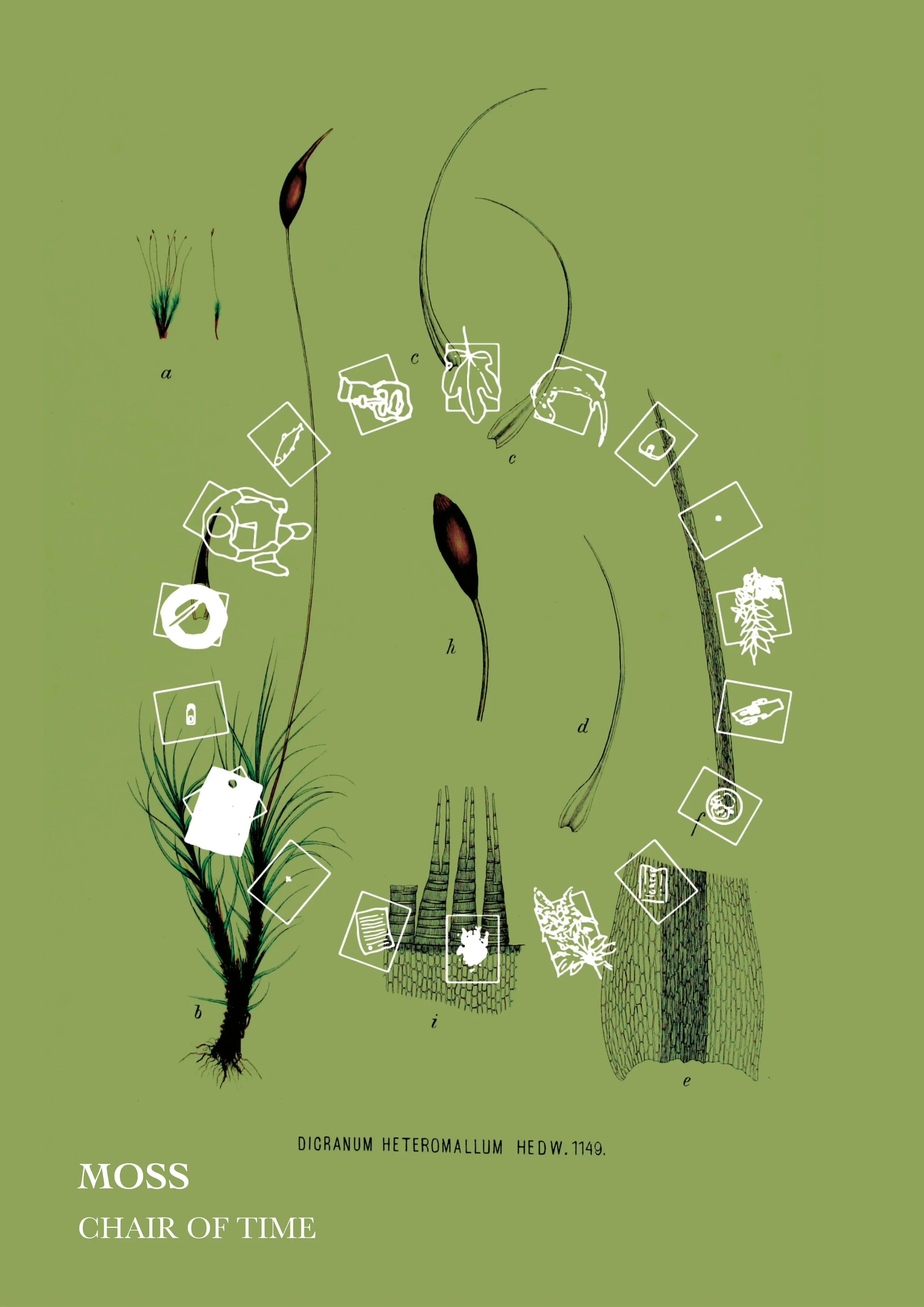Moss
Chair of time
Ordinary moss - Brachythecium rutabulum
Silky forklet moss - Dicranella heteromalla
Mouse-tail moss - Isothecium myosuroides
Moss is one of the many actors of the River Sheaf. From first look unnoticeable, it grows everywhere (the surface of other actors included) and testifies to significant processes that are taking place in the river’s ecosystem.
Inspired by the concept of zeitgeber (german for ‘time giver’) the project takes inspiration from the difference of speed in various natural actions, in this case - velocity of the River Sheaf and speed of local moss species growth. The chosen actor, subjected to comparatively much faster process, appears to be on the other side of the spectrum, representing the slow paced and contemplative nature of the River Sheaf ecosystem.
How does knowing this affect human time perception?
Does time move relatively faster or slower for a person in such a diverse (natural processes speed wise) environment?
What kind of states does this diversity provoke?
Mentioned elements are represented in a partial map of the River Sheaf with places where velocity measurements were done. This was carried out by taking a 5m rope as a reference and measuring the flow time of a wooden stick in that length. Together with this, samples of local moss were taken and their speed of spreading evaluated.
Samanos yra vienas iš daugelio upės Sheaf veikėjų. Iš pirmo žvilgsnio nepastebimos, jos auga visur (taip pat ir kitų veikėjų paviršiuje) ir liudija apie reikšmingus upės ekosistemoje vykstančius procesus.
Įkvėptas zeitgeber (vok. zeitgeber - "laiko davėjas") sąvokos, projektas semiasi įkvėpimo iš greičio skirtumo įvairiuose gamtos veiksmuose, šiuo atveju - Sheaf upės greičio ir vietinių samanų rūšių augimo greičio. Pasirinktas veikėjas, susiduriantis palyginti su daug greitesniu procesu, atrodo esantis kitoje spektro pusėje, reprezentuojantis lėtą ir kontempliatyvų upės Sheaf ekosistemos tempą.
Kaip tai žinojimas veikia žmogaus laiko suvokimą?
Ar tokioje įvairialypėje (gamtinių procesų greičio požiūriu) aplinkoje žmogui laikas juda santykinai greičiau ar lėčiau?
Kokias būsenas sukelia ši įvairovė?
Minėti elementai pavaizduoti daliniame upės Sheaf žemėlapyje su vietomis, kuriose buvo atlikti greičio matavimai. Tai buvo atliekama naudojant 5 m ilgio virvę kaip atskaitos tašką ir matuojant medinės šakelės tekėjimo laiką tame ilgio ruože. Kartu buvo paimti vietinių samanų mėginiai ir įvertintas jų plitimo greitis.
Entanglements to other actors: bricks & rituals, butterfly bush and soil.
Laura Norkunaite
